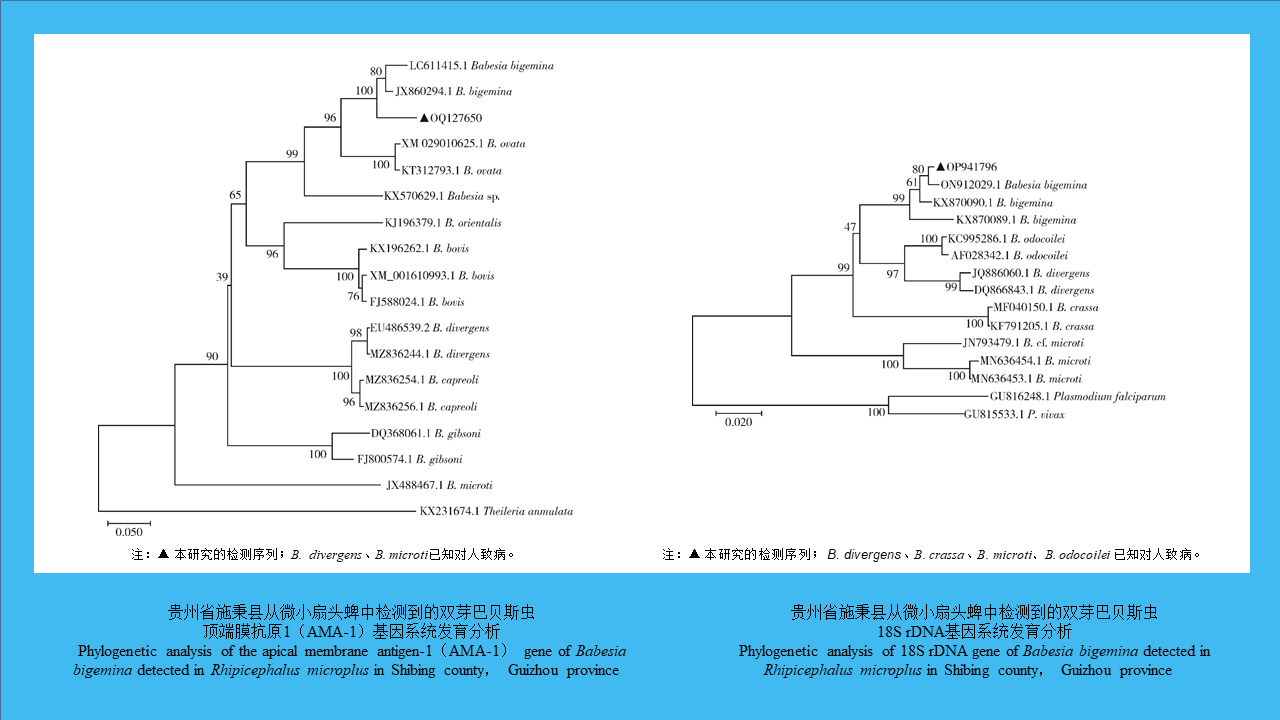 PDF(1038 KB)
PDF(1038 KB)


贵州省施秉县媒介蜱携带双芽巴贝斯虫的调查研究
吴胜春, 孟娇, 黄健胜, 余福勋, 吴家红, 杨光红, 江佳富, 孙毅, 曹务春, 詹琳
中国媒介生物学及控制杂志 ›› 2023, Vol. 34 ›› Issue (2) : 254-261.
 PDF(1038 KB)
PDF(1038 KB)
 PDF(1038 KB)
PDF(1038 KB)
贵州省施秉县媒介蜱携带双芽巴贝斯虫的调查研究
 ({{custom_author.role_cn}}), {{javascript:window.custom_author_cn_index++;}}
({{custom_author.role_cn}}), {{javascript:window.custom_author_cn_index++;}}Investigation of Babesia bigemina carried by ticks in Shibing county, Guizhou province, China
 ({{custom_author.role_en}}), {{javascript:window.custom_author_en_index++;}}
({{custom_author.role_en}}), {{javascript:window.custom_author_en_index++;}}
| {{custom_ref.label}} |
{{custom_citation.content}}
{{custom_citation.annotation}}
|
/
| 〈 |
|
〉 |